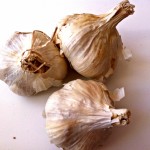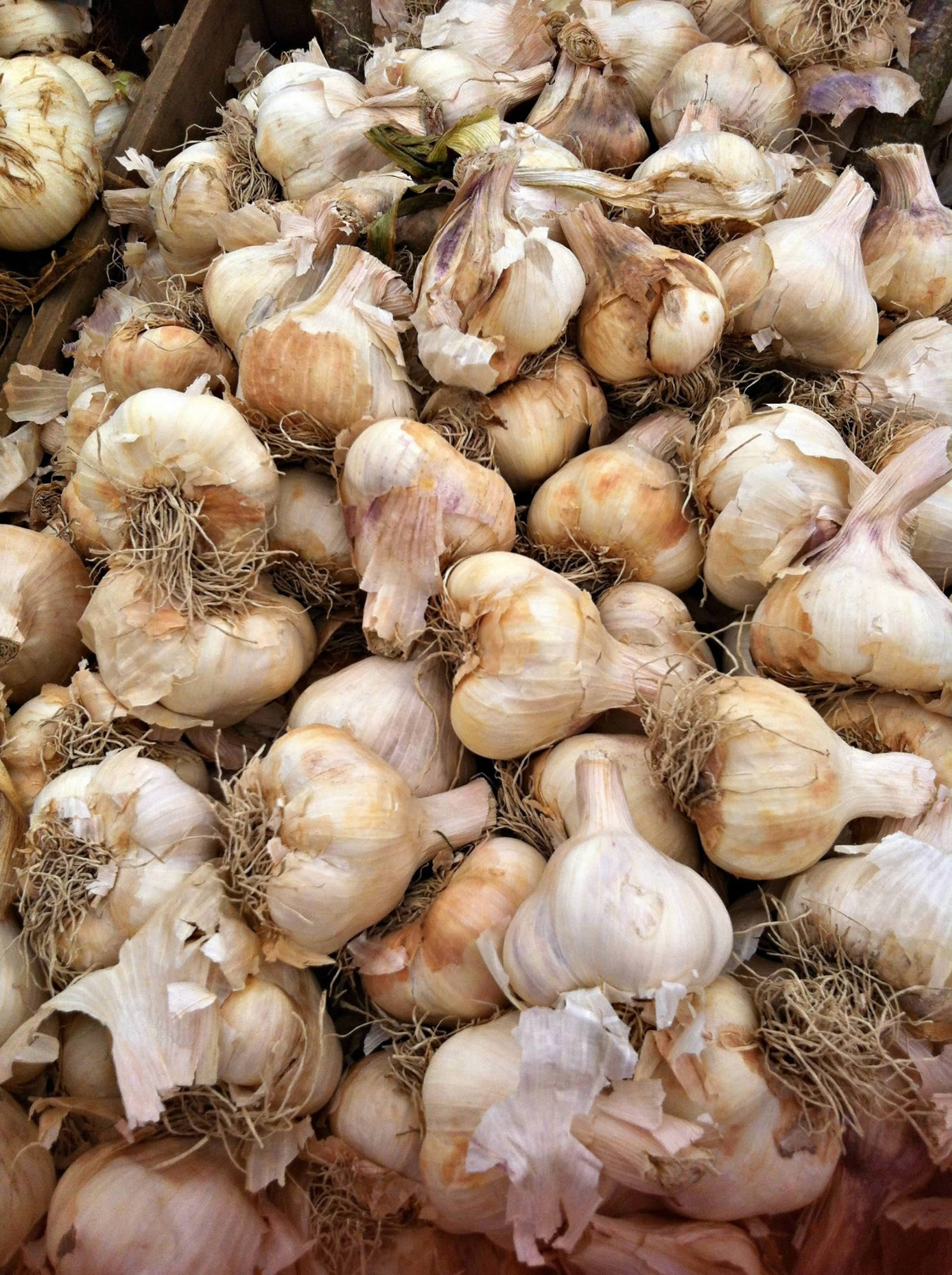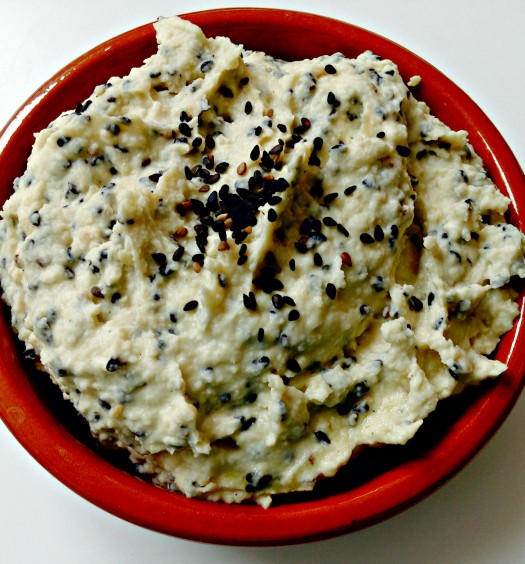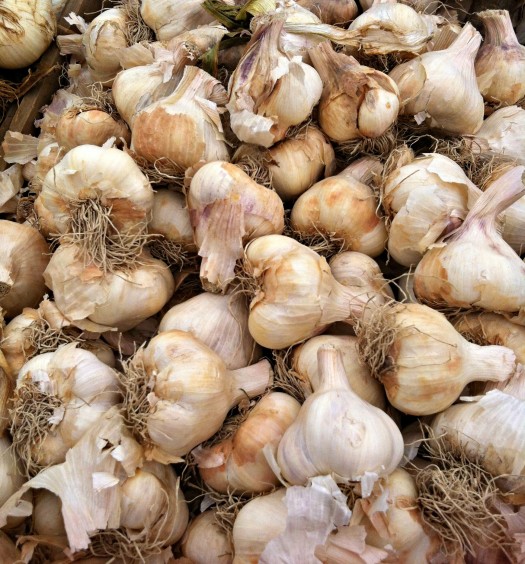Reasons to eat garlic
The health benefits of garlic have been well documented – it’s been used as a ‘traditional’ medicine for centuries and now we recognise it’s value as a food – and as a supplement.
We plant garlic in the garden most years in either autumn or spring: it’s fun for the kids to do and is super-easy, just pushing down the fat, stinky cloves under the surface of the earth. I’ve found that generally, autumn planted garlic does better – but I’m not always that organised so sometimes it just has to wait until spring. Planting a mix of varieties (softneck and hardneck) is a good idea; hardneck varieties form ‘scapes’ (flower stems) that taste great in early summer stir fries (and they’re virtually impossible to find in the supermaket) while the soft neck varieties are better for storing into winter.
 As well as being an easy and incredibly healthy food to grow, my garlic in the garden also serves a purpose – I line the edges of my veggie beds with it hoping that the pungent smell will deter pests from eating the rest of my crops. Garlic’s alternative name, the stinking rose is for good reason. Garlic contains smelly sulphur compounds which repel pests when growing in the soil. When we eat garlic, it continues in this role and is fantastic for the immune system, with anti-fungal, anti-bacterial and anti-viral activity.
As well as being an easy and incredibly healthy food to grow, my garlic in the garden also serves a purpose – I line the edges of my veggie beds with it hoping that the pungent smell will deter pests from eating the rest of my crops. Garlic’s alternative name, the stinking rose is for good reason. Garlic contains smelly sulphur compounds which repel pests when growing in the soil. When we eat garlic, it continues in this role and is fantastic for the immune system, with anti-fungal, anti-bacterial and anti-viral activity.
Many of the benefits of garlic are due to the sulphur compound named allicin. But you’ll be missing out on maximum health benefits if you don’t prepare your garlic in the right way. Garlic needs to be crushed in order to release the powerful allicin (crushing is better than chopping as it gives a bigger surface area for the allicin to escape from). I find the best way to do this is to chop a clove into a few bits and then pound it with a little sea salt (stops it slipping) in a pestle and mortar. Like kneading bread, this can be therapeutic if you’ve had a bad day. If I use a garlic crusher half of it gets stuck in the grooves and grating garlic just means my hands smell of garlic for the next couple of days, which is not my preferred body aroma. You’ll need to crush or chop the garlic about ten minutes ahead of using it – because allicin is deactivated by both heat (e.g. cooking) and acid such as lemon juice (e.g. in a salad dressing).
Garlic has been the subject of much research, including heart disease* (beneficial for high cholesterol, triglycerides, atherosclerosis and blood pressure), cancer, digestive and immune health (including reduction in infections) as well as blood sugar balance.
In our clinic, we most frequently use garlic as a food and supplement for cardiovascular issues and for helping to rebalance the digestive system, including addressing parasites, fungal overgrowth and SIBO (Small Intestinal Bacterial Overgrowth). Our roasted garlic dip is a simple lunch option – making it easy to include garlic in the diet on a regular basis.
*Note that if you’re on medication, particularly warfarin please check with your gp before significantly increasing garlic intake or taking supplements, due to its blood thinning effect.
We hope you enjoy this blog post, let us know your thoughts in the comments below or on social media – we’re on Twitter, Facebook, Instagram and Pinterest. And don’t forget to sign up to our newsletter to receive a monthly update of our recipes, nutrition tips and expert advice.





